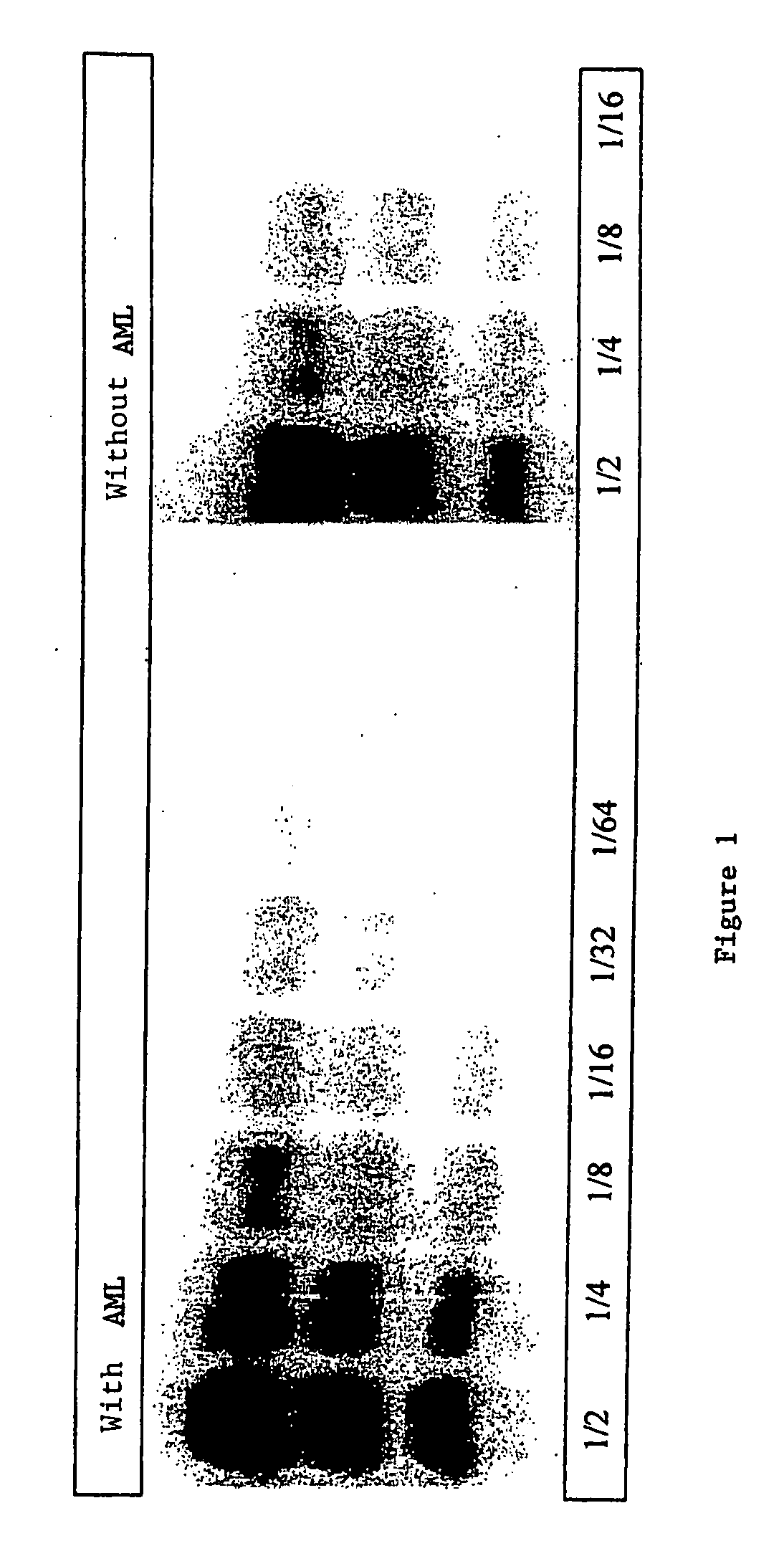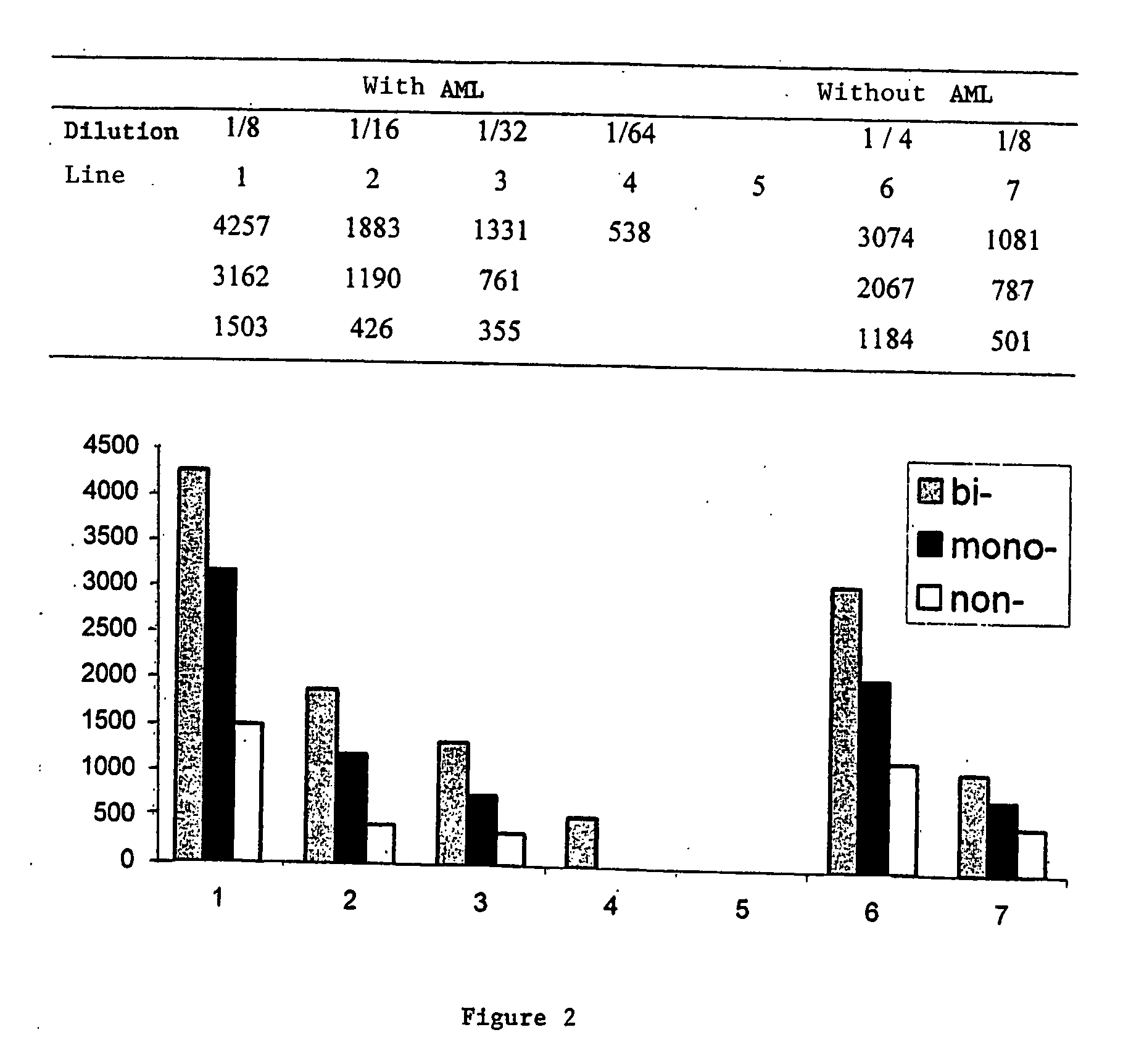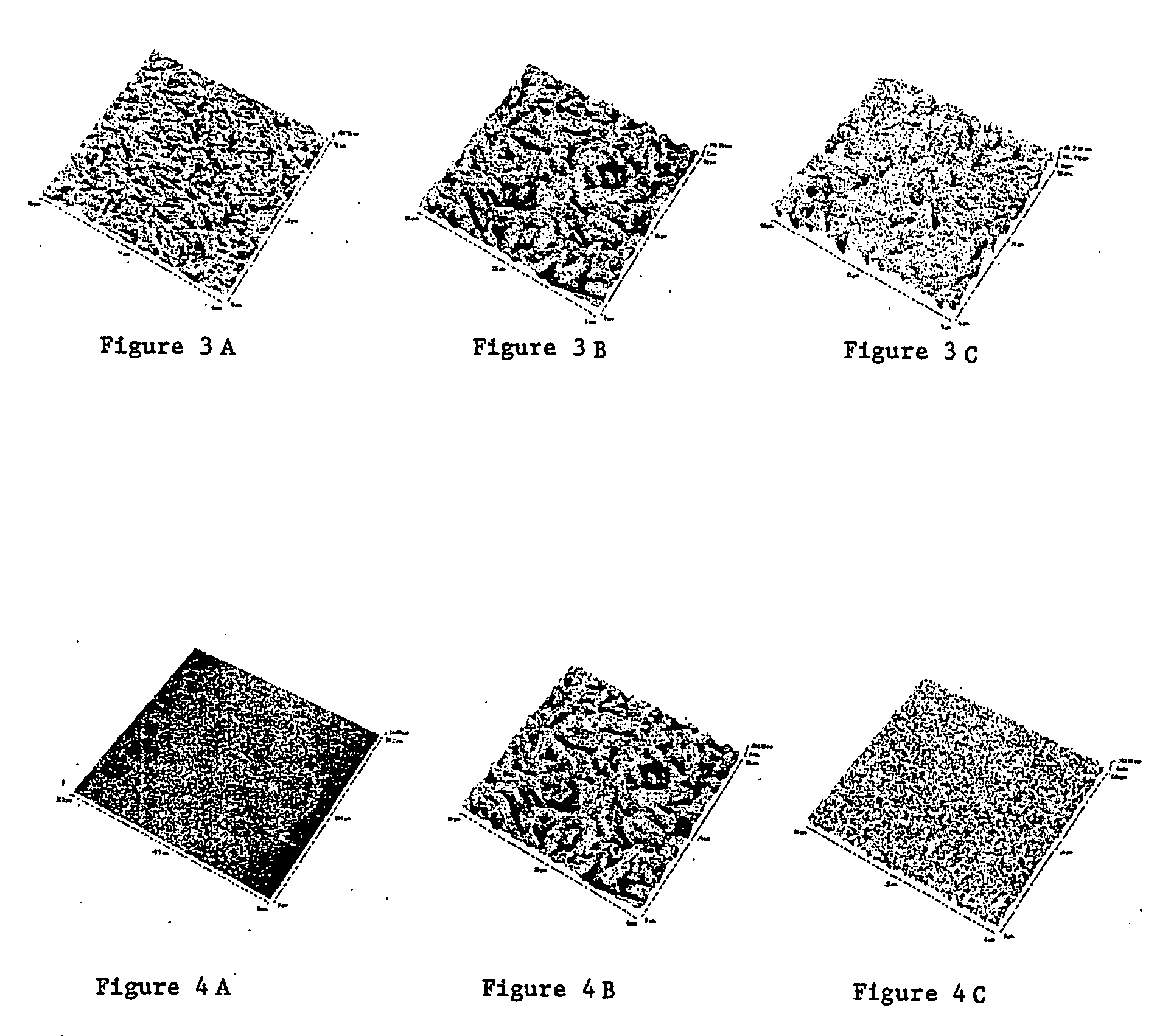Process for detecting PrP using a macrocyclic adjuvant ligand
a macrocyclic and adjuvant ligand technology, applied in the field of process for detecting prp using a macrocyclic adjuvant ligand, can solve the problems of slowing down the development of epidemiological models, difficult infected animals' detection of prpsup>sc/sup>, and poor recognition of human physiopathology
- Summary
- Abstract
- Description
- Claims
- Application Information
AI Technical Summary
Problems solved by technology
Method used
Image
Examples
example 1
Preparation of Macrocyclic Adjuvant Ligands
1.1 Preparation of p-sulfonato-3,7-(2-carboxy-methyloxy)-calix-[6]-arene (called AML 1)
[0098] This macrocyclic adjuvant ligand AML1 has the general formula V:
[0099] This ligand was synthesized as follows: A suspension of calyx[6]arene in acetonitrile in the presence of a base equivalent (K2CO3) was agitated on reflux. After 30 minutes, 0.5 equivalent of alkylating agent (ethyl bromoacetate) was added to the reaction mixture, that was maintained on reflux and under agitation 24 hours. After cooling of the suspension the solvent was evaporated under reduced pressure and the resulting solid was dissolved in 200 ml CH2Cl2 and washed twice with a solution of hydrochloric acid (1M) and once with demineralized water. After having dried on magnesium sulfate (MgSO4) the organic solvent was evaporated under reduced pressure and permits the obtention of a white powder. This powder was purified on a silica chromatography column (eluent: CH2Cl2: he...
example 2
Detection of PrP Using AML1 not Coupled to a Solid Support
2.1 Preparation of Samples
[0112] The samples that were used for the examples of FIGS. 1 and 2 were prepared as follows:
[0113] Sample without AML: 0.5 g brain tissue was crushed in 4.5 ml 5% glucose solution to obtain a suspension with 10% weight / volume. 1 μg proteinase K (Boehringer) in 10 μl was added per 100 μl brain homogenate at 10% in glucose at 5% (equivalent to 10 mg of brain). The solution was placed under vortex and incubated at 37° C. for another hour. After the addition of 100 μl denaturing Laemmli buffer, the mixture was heated 5 minutes at 100° C., centrifuged at 12000 G for 5 nm, and the supernatants recovered to make them migrate on SDS PAGE.
[0114] Sample with AML: 0.5 g brain tissue was crushed in 4.5 ml 5% glucose solution to obtain a suspension with 10% weight / volume. 1.5 μg proteinase K (Boehringer) in 10 μl was added per 100 μl brain homogenate at 10% in glucose at 5% (equivalent to 10 mg of brain). T...
example 3
Detection of Recombinant PrP Using the C6S Graft on a Solid Support
3.1 Detection of Bovine Recombinant PrP on Plates
a) Protocol
[0127] The protocol used in this experiment was from a classic ELISA.
[0128] According to Example 1, grafting of activated amine plates (NH S) was performed for 6 hours with a range of sulfonated calix-6-arenes (C6S) diluted in a solution of PBS 50 mM (saline phosphate buffer). The plates were then rinsed with distilled water before being saturated with a solution of PBST (PBS Tween) (0.05% milk 5%) for 1 hour at ambient temperature. After rinsing, a solution of recombinant bovine protein prion (PrP) diluted to a concentration of 0.25 μg / ml was deposited in PBST 0.05%. It was incubated one hour at ambient temperature. The plate was rinsed again three times. It was then incubated with a solution of anti-PrP antibodies marked with peroxidase diluted at 0.5 μg / ml in PBST 0.05% for one hour at ambient temperature. The antibody used recognizes the region def...
PUM
| Property | Measurement | Unit |
|---|---|---|
| concentration | aaaaa | aaaaa |
| temperature | aaaaa | aaaaa |
| pH | aaaaa | aaaaa |
Abstract
Description
Claims
Application Information
 Login to View More
Login to View More - R&D
- Intellectual Property
- Life Sciences
- Materials
- Tech Scout
- Unparalleled Data Quality
- Higher Quality Content
- 60% Fewer Hallucinations
Browse by: Latest US Patents, China's latest patents, Technical Efficacy Thesaurus, Application Domain, Technology Topic, Popular Technical Reports.
© 2025 PatSnap. All rights reserved.Legal|Privacy policy|Modern Slavery Act Transparency Statement|Sitemap|About US| Contact US: help@patsnap.com



